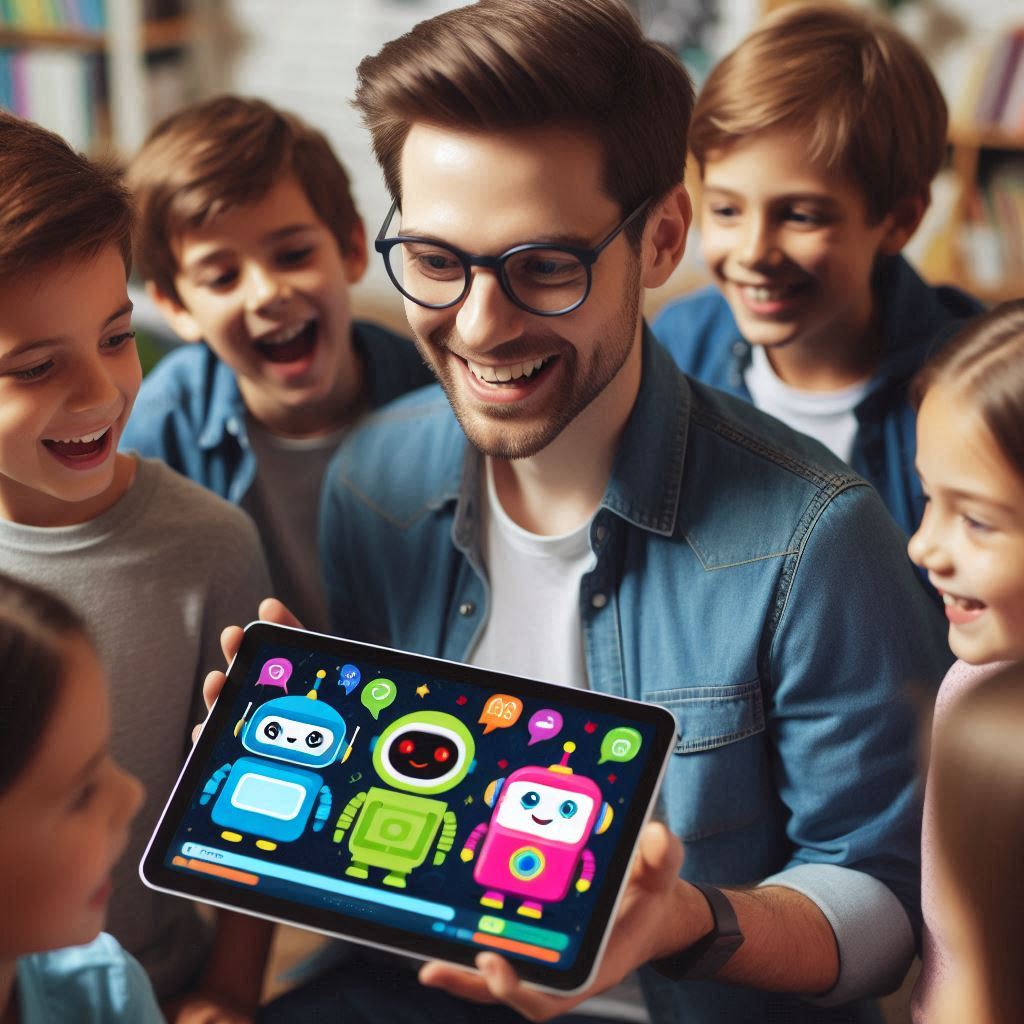IoT, or the Internet of Things, connects devices and is the next industrial revolution.
Experts expect IoT to bring extreme change, disruption, and a new global paradigm.
The Internet of Things expands connections from people and computers to digitally connected “things.”
These devices record and measure data.
This data might include simple readings from sensors or complex findings from equipment measuring multiple data streams.
These sophisticated gadgets can also affect or actuate the measured data, like a connected thermostat.
The Internet of Things, or IoT, is a hot issue right now.
Like any new notion, this one is not well-known to the general public.
In its most basic form, it alludes to a virtual internet link between objects, procedures, people, animals, and nearly everything else we see around us.
IoT enables a scenario where everything autonomously communicates, eliminating the need for human or machine-human interaction.
In addition to being a ground-breaking discovery, it has the potential to significantly improve our quality of life.
Benefits of IoT
1. Improved Productivity of Staff and Reduced Human Labor
IoT solutions automate repetitive tasks, freeing humans for more complex tasks requiring creative problem-solving.
This automation minimizes the workforce, reducing a company’s operating costs.
Read: What is Internet of Things (IoT)?

2. Better Use of Resources and Assets
Networked sensors’ automatic scheduling and monitoring allow for greater resource efficiency, including reduced water and power usage.
Innovative Tech Solutions, Tailored for You
Our leading tech firm crafts custom software, web & mobile apps, designed with your unique needs in mind. Elevate your business with cutting-edge solutions no one else can offer.
Start NowFor instance, inexpensive motion detectors could result in significant electricity and water bill savings, increasing the efficiency and environmental friendliness of both small and large organizations.
3. Efficient Operation Management
Another important advantage provided by the connectivity of smart devices is the automated control of numerous operational areas, including inventory management, shipping tracking, fuel and spare parts management, among others.
For instance, this strategy employs RFID tags and an associated network of sensors to track the whereabouts of machinery and cargo.
4. Cost-Effective Operation
The equipment may have a greater production rate leading to increased profitability because of the decreased downtime times, guaranteed by autonomously scheduled and regulated maintenance, supply of raw materials, and other manufacturing requirements.
Once more, IoT devices significantly improve administration across the entire company structure as well as within specific departments.
5. Improved Work Safety
In addition to the previously mentioned benefits, periodic maintenance is also very helpful for guaranteeing operational safety and adherence to the necessary laws.
Safe working conditions also increase the enterprise’s appeal to partners, partners, and employees, which improves the company’s reputation and brand trust.
In addition to increasing safety, smart technology lowers the possibility of human error at many points in corporate operations.
IoT devices like surveillance cameras and motion sensors enhance security and prevent theft and corporate espionage.
Read: The Impact of the Internet of Things (IoT) on Our Lives and Work
Applications of IoT
1. Consumer Applications
IoT has various consumer applications, including linked cars, connected health, home automation (including lighting and speaker systems), wearable gadgets, and appliances with remote monitoring features, such as doorbells with remote video capability.
Numerous of these are included in the smart home.
2. Care Applications
Internet-enabled devices can also provide important support for the elderly or those with disabilities, improving their quality of life.
For example, voice-activated gadgets can help people with vision or movement issues, while alert systems can be directly connected to cochlear implants to help people with hearing loss.
Additionally, sensors can monitor medical issues like falls.
3. Smart Home Applications
An IoT-enabled house includes media and security systems, lighting, heating, and air conditioning.
These can help save energy by turning off equipment that is not required.
A central platform or hub that connects to smart appliances and gadgets is the foundation of many smart homes.
Most of the time, these are managed via a smartphone, tablet, or other devices, sometimes without a Wi-Fi bridge.
These systems can be connected to independent platforms like the Apple HomePod or Amazon Echo or to open-source ecosystems like Home Assistant.
4. Industrial Applications
Industrial IoT (IIoT) devices make it possible to collect and analyze data from many machinery, technologies, and places.
The IIoT also enables automated asset updates to preserve efficiency and avoid lost time and money for repairs and other circumstances.
Read: Impact of Internet: Transformation Through Software History
5. Manufacturing Applications
The Internet of Things (IoT) can connect industrial equipment to enable network control and management to create intelligent manufacturing processes.
Seamless API Connectivity for Next-Level Integration
Unlock limitless possibilities by connecting your systems with a custom API built to perform flawlessly. Stand apart with our solutions that others simply can’t offer.
Get StartedThese systems make it possible to optimize operations, supply networks, and products, as well as to respond to market demands.
Through predictive maintenance, statistical analysis, and measures that maximize dependability, the IoT can contribute to the delivery of better safety and reliability.
6. Military Applications
The Internet of Military Things was established as a result of the use of IoT technology for military operations (IoMT).
Applications for delivering combat data in this area include reconnaissance, surveillance, and more.
Building a coordinated and data-efficient military can include the employment of sensors, munitions, vehicles, robotics, and wearable technology.
7. Transport Applications
Transportation uses for the Internet of Things include inter- and intra-vehicle communication, intelligent traffic control, intelligent parking, toll collecting, logistics, fleet management, vehicle control, safety, and road assistance.
IoT can also provide vehicle-to-everything (V2X), vehicle-to-vehicle (V2V), vehicle-to-infrastructure (V2I), and vehicle-to-pedestrian (V2P) communication, which connects automobiles with the transportation system (V2P).
These IoT communication networks are facilitating the development of driverless vehicles and connected road infrastructure.
8. Building Applications
IoT devices can monitor and manage mechanical, electrical, and electronic systems in various building types.
Smart buildings can assist minimize energy use and monitor tenant behaviour because the Internet is integrated.
9. Medical and Healthcare Applications
Data collection and analysis for research and patient monitoring are only a couple of the medical and healthcare uses for which the IoT can be put to use.
The Internet of Medical Things (IoMT) is the name given to the IoT in these contexts.
The Internet of Medical Things (IoMT), called “smart healthcare,” links resources and services to create a digitalized healthcare system that can track health and emergency notification systems, such as blood pressure and heart rate monitors, pacemakers, and high-tech hearing aids.
To take this a step further, some hospitals have installed “smart beds” that can recognize whether a patient is attempting to get up or if they are occupied.
These beds can also be altered so that the patient receives the proper support and pressure at all times.
On a smaller scale, improvements in electronic manufacturing allow point-of-care medical diagnostics to be performed using low-cost, disposable, and portable IoMT sensors that can be applied to paper or fabric.
Through remote monitoring, IoMT can also be utilized to manage, control, or prevent chronic diseases.
Thanks to wireless solutions, health professionals can now collect patient data and use algorithms for health data analysis.
Consumer products like connected scales or fitness trackers that promote a better lifestyle are examples of other healthcare uses.
IoMT is currently being used in the health insurance sector outside of clinical settings.
It includes sensor-based tools like wearables, connected health devices, and mobile apps to analyze client behaviour and offer more precise underwriting and pricing models.

10. Infrastructure Applications
Sustainable urban and rural infrastructure, such as bridges, railroad tracks, and wind farms, can be monitored and managed via IoT.
Data collection can enable monitoring structural conditions to introduce safety and productivity improvements, cost savings, time reduction, and more.
This helps to maintain assets and minimize risk.
Transform Business with Custom CRM & ERP Solutions
Elevate your operations with a CRM or ERP tailored for you. Let’s build the perfect solution that others can't replicate—crafted to match your business's needs like no other.
Get StartedScheduling repairs and maintenance can be aided by real-time analytics.
Read: The Role of Artificial Intelligence in Speech Recognition Technology
Conclusion
In conclusion, the Internet of Things (IoT) is transforming industries by connecting devices, enhancing productivity, and improving safety.
Its wide range of applications—from consumer gadgets to military operations—demonstrates its versatility and potential to revolutionize daily life and industrial processes alike.
As IoT continues to evolve, it promises to drive innovation, efficiency, and sustainability across various sectors.
Embracing this technology is essential for staying competitive and unlocking new opportunities in an increasingly connected world.
The future of IoT is bright, offering endless possibilities for both individuals and businesses.
Before You Go…
Hey, thank you for reading this blog post to the end. I hope it was helpful. Let me tell you a little bit about Nicholas Idoko Technologies.
We help businesses and companies build an online presence by developing web, mobile, desktop, and blockchain applications.
We also help aspiring software developers and programmers learn the skills they need to have a successful career.
Take your first step to becoming a programming expert by joining our Learn To Code academy today!
Be sure to contact us if you need more information or have any questions! We are readily available.











